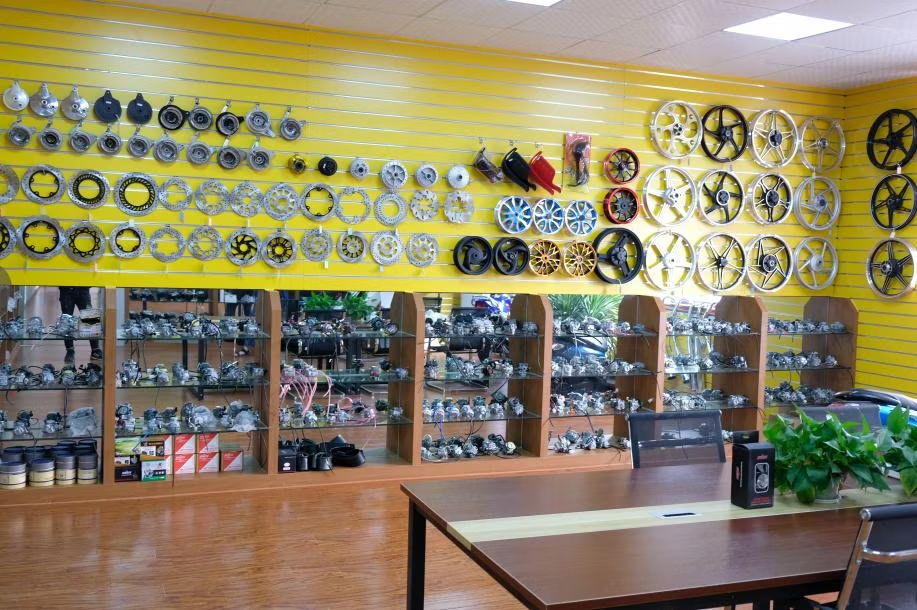Discover Top Quality Moto Parts NZ for All Your Motorcycle Requirements
Discover Top Quality Moto Parts NZ for All Your Motorcycle Requirements
Blog Article
Recognizing the Important Parts of a Bike: A Comprehensive Overview for Enthusiasts
For motorcycle fanatics looking to boost their riding experience and ensure their bikes run efficiently, recognizing the necessary parts of a motorcycle is extremely important. Each aspect, from the engine's intricate functions to the crucial function of the braking devices, not only affects performance but also safety and security and comfort.
Engine Elements

The camshaft plays a vital role in regulating the timing of the engine's shutoffs, ensuring the precise opening and closing essential for effective fuel and air intake, as well as exhaust expulsion. This timing is critical to keeping optimum engine performance and effectiveness. Additionally, the carburetor or fuel shot system, relying on the motorbike model, is accountable for blending air with fuel in the right ratio for burning.
The air conditioning system, either air or liquid-based, functions to maintain the engine's temperature within functional restrictions, avoiding getting too hot and guaranteeing longevity - motox parts nz. Each element, thoroughly designed and integrated, adds to the seamless procedure of the engine, specifying the bike's power outcome and overall performance
Transmission System
Integral to the bike's capability, the transmission system guarantees reliable power transfer from the engine to the wheels. This system comprises several essential components, including the clutch, transmission, and last drive, each playing an essential duty in translating the engine's power right into activity. The clutch, generally run by a hand bar, offers to disengage the engine and involve from the transmission, enabling smooth gear changes and controlled acceleration.
The gearbox, commonly referred to as the transmission appropriate, contains a set of gears that motorcyclists can by hand shift through to adjust the bike's speed and torque output. These equipments are prepared in a sequence that allows the motorcycle to increase smoothly and preserve ideal engine efficiency throughout numerous speeds. Most bikes utilize a consecutive gearbox, calling for the motorcyclist to shift equipments in a fixed order.
Braking Mechanisms
While comprehending the transmission system is essential to using a bike's power, just as crucial is the ability to regulate and quit that power properly, which is where stopping systems enter play. Brakes are important for safety and performance, providing the cyclist with the required control to navigate different surfaces and conditions. Typically, motorcycles include two kinds of braking systems: disc brakes and drum brakes.
Disc brakes are extra prevalent in modern bikes as street bikes for sale a result of their premium performance. They contain a brake disc, caliper, and pads. When activated, the caliper presses the brake pads against the rotating disc, converting kinetic energy right into heat, thereby reducing the wheel. This system supplies much better heat dissipation, regular performance, and boosted stopping power, especially in wet conditions.
Alternatively, drum brakes, though much less usual, are still found in some motorbikes. They function by pressing brake footwear versus the inner surface area of a drum affixed to the wheel. While normally much less efficient in heat dissipation and stopping power, drum brakes are less complex and more cost-efficient.
Recognizing these braking systems' nuances permits riders to preserve their motorbikes correctly and appreciate the design that makes sure risk-free and effective stopping.
Suspension and Steering
Suspension and guiding systems are vital components that significantly affect a motorcycle's handling and trip convenience. The shock absorber, being composed of forks at the front and shock absorbers at the rear, takes in roadway irregularities, boosting stability and control. Front forks, generally telescopic or upside down, compress and rebound to reduce influences, while rear shock absorbers keep tire contact with the road, vital for grip and security.
Steering, centered around the handlebars, connects the biker to the bike's directional control. The steering head bearings ensure smooth operation, permitting precise maneuverability. Appropriate alignment and upkeep of these bearings are vital for predictable steering reaction and minimizing rider fatigue.
The suspension's adjustability is an additional critical aspect; preload, damping, and rebound setups allow personalization to fit various riding problems and styles. This flexibility is vital for maximizing efficiency, whether navigating metropolitan streets or taking on sturdy trails. Technologies like electronic suspension systems offer real-time adjustments, improving adventure top quality throughout diverse surfaces.

Electrical Equipments
After making certain a smooth and controlled trip via reliable suspension and steering systems, street bikes for sale attention transforms to the electric systems, a critical facet of modern motorbikes. These systems play a crucial function not only in starting the engine yet also in powering different parts that enhance the functionality and safety and security of the motorcycle.
At the heart of a motorcycle's electrical system is the battery, which stores electrical power needed for beginning the engine and powering supporting systems - motocross gear nz. The alternator or generator, paired with the rectifier-regulator, makes sure the battery remains charged while the motorbike functions, converting power right into electrical energy and preserving voltage degrees
The ignition system, another vital component, is in charge of sparking the air-fuel blend in the engine's cylinders. Modern bikes frequently use a digital ignition system, supplying higher efficiency and reliability compared to standard systems.
Lights systems, consisting of headlights, tail lights, and indications, are also crucial, ensuring exposure visit this site right here and security for the motorcyclist. Added electronic components such as sensors, control systems, and shows add to sophisticated features like gas injection administration, anti-lock stopping systems (ABDOMINAL), and digital control panels, even more enhancing the riding experience.
Conclusion
A detailed comprehension of a motorbike's necessary parts, including the engine, transmission system, stopping devices, suspension, steering, and electric systems, is vital for fanatics aiming to maximize efficiency, safety, and comfort. Proficiency of these elements permits for educated choices regarding maintenance and upgrades, eventually boosting the riding experience. By integrating this understanding, riders can guarantee their bikes operate at peak efficiency and reliability, consequently taking full advantage of both pleasure and durability of their cars.
For motorbike fanatics looking to elevate their riding experience and ensure their bikes run efficiently, understanding the crucial parts of a motorbike is paramount.Important to the motorcycle's functionality, the transmission system guarantees effective power transfer from the engine to the wheels.While recognizing the transmission system is vital to taking advantage of a bike's power, just as vital is the capability to control and quit that power effectively, which is where braking devices come into play. Normally, motorbikes feature 2 kinds of braking systems: disc brakes and drum brakes.
An extensive comprehension of a motorbike's essential parts, consisting of the engine, transmission system, stopping devices, suspension, guiding, and electric systems, is vital for lovers aiming to enhance safety and security, comfort, and performance.
Report this page